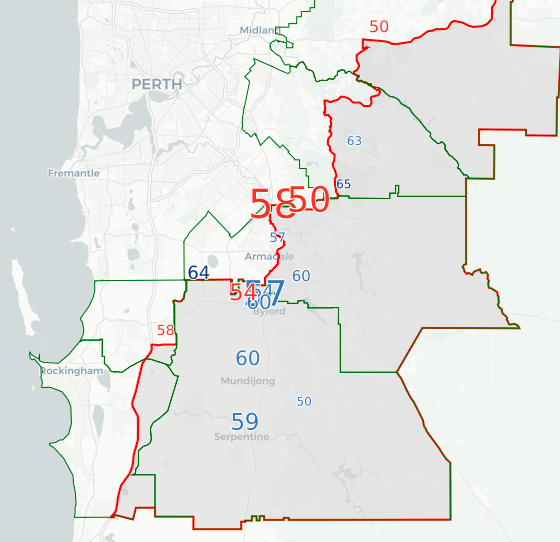Yesterday’s by-election in the Perth seat of Darling Range was undoubtedly a disappointment for Labor, with a swing of 9% after preferences, producing a reasonably comfortable victory for Liberal candidate Alyssa Hayden.
A Reachtel poll last week predicted a 54-46 result in favour of Labor, which was out by about 7%. While it’s just one poll, it’s more evidence that we don’t really have the ability to do good accurate polls in Australia (at least for the budgets available to media organisations).
In one way the result wasn’t that surprising. Labor’s sitting MP was forced out in absurd embarrassing circumstances, and then the party had to change candidates shortly before the election. But on the other hand Labor is a new state government performing reasonably well, and statewide polling suggests the party is on the up at a state and federal level. These strong fundamentals made it plausible that the party could have withstood its local problems and held on.
I don’t think we can say anything more generally about the state of Labor in Western Australia based on this one by-election. The circumstances were too strange.
I’ve analysed the results at the booth level (thanks to William Bowe for tracking them down – they’re not yet available on the WAEC website).
Firstly, this booth breakdown divides the booths in the same way I did for the pre-election guide. The ‘central’ area mostly aligns with Armadale council area while the ‘south’ mostly aligns with Serpentine-Jarrahdale.
The Liberal Party did much better in the north and south than they did in the centre. Labor’s vote held up better in Armadale, just barely losing. Labor also won close to half of the pre-poll.
The sparsely-populated north was already favourable to the Liberal Party in 2017, so it’s unsurprising that the swing was smaller there. The south had the biggest swings to the Liberals, which explains the divergence in the vote between the centre and the south.
Booth breakdown
| Voter group | LIB 2PP % | LIB 2PP swing | Total votes | % of votes |
| South | 55.4 | +11.7 | 8,425 | 35.2 |
| Central | 50.3 | +6.4 | 4,896 | 20.4 |
| North | 55.2 | +4.6 | 1,273 | 5.3 |
| Other votes | 58.1 | +13.9 | 2,052 | 8.6 |
| Pre-Poll | 51.2 | +9.2 | 7,300 | 30.5 |
Below the fold I have posted a map showing the two-party-preferred vote per booth. You can toggle this map off and instead show the swing map. Labor only gained a swing towards them in one booth, increasing their vote by 2.8% at Kelmscott Primary School. I think this is probably explained by the closure of the neighbouring Clifton Hills Primary School booth after a garbage truck crashed into the school on Thursday. Clifton Hills Primary was much more pro-Labor than Kelmscott Primary in 2017.




Mainly in Canning?
The ALP seriously out-spent the Liberal Party and despite their earlier candidate stuff-ups were running to win. The overall 13.1% swing against Labor in the 4 Byford boxes cannot be dismissed as natural Liberals returning to the fold.
Except for Kelmscott, the far northern boxes and Wellard, Darling Range falls within federal Canning.
There was a 5.0% swing to the Liberal Party in Kelmscott when Clifton Hills is amalgamated with it in both elections.
Yes the two former ALP candidates before the one that contested the election were a major part of the ALP’s problem as it involved deception. No one likes a cheat.
Comments are closed.